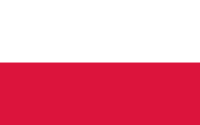Country code:
Flag:

Ownership rules:
Default (statutory) regime for the ownership | Author / creator / researcher |
|---|---|
Default (statutory) regime for employee’s creations | Industrial Property: Employer, unless otherwise agreed (Article 11 section 3 of Industrial Property Law of 2000); Copyright: Employer, if an employee has created a work within the scope of his/her duties resulting from the employment relationship, upon acceptance of the work, within the limits resulting from the purpose of the employment contract and the intention of the parties (Article 12 of Law on Copyright and Related Rights of 1994). |
Ownership of research results in publicly sponsored research | Where an invention, a utility model or an industrial design has been made by a creator with the assistance of an economic entity, the latter may enjoy the right to exploit the invention, the utility model or the industrial design in its own field of activity. In the agreement on the provision of assistance, the parties may stipulate that the mentioned right referred shall belong in whole or in part to the economic entity (Article 11 section 5 of Industrial Property Law of 2000) |
Specific ownership rules for public HEIs/research organisations and possibility to modify it contractually | Copyright: Unless the contract of employment states otherwise, the research institutions shall have the priority in publishing a scientific work when its employee created such work as a result of performing his/her duties under the employment relationship. The author shall have the right to remuneration. (Article 14 of Law on Copyright and Related Rights of 1994) |
Specific ownership regime for students/ visiting researchers/doctoral students and possibility to modify it contractually | Copyright: No specific rules except that HEIs get a right of first publication of the final work of the student after 6 months after graduation. Possibility to modify this rule in internal HEIs regulation. (Article 15a of Law on Copyright and Related Rights of 1994) |
Related law (name & link) |
Dissemination rules:
Limitations on publication | No statutory rules, however, most internal HEIs’ regulations introduce the obligation for prior notification in order to avoid the risk of destroying the novelty requirement needed for patent procedure. Law on Copyright and Related Rights (in Article 14) provides that the priority of publication shall expire if within six months from the date of delivery of the work no publication contract has been made with the author or if, within two years from the date of its acceptance, the work has not been published. |
|---|---|
Specific rules regarding publication of scientific results financed by public bodies | None |
Non-disclosure clauses in research contracts | Sometimes (rarely) Polish HEIs request inclusion of non-disclosure clauses. |
Specific incentives for innovation activities:
Related Law (name & Link) | |
|---|---|
Incentives provided by law for individual researchers | Information not available |
Related Law (name & Link) | Information not available |
Incentives provided by HEI for researcher | For instance: Participation in royalties (by HEI internal regulation the researchers are entitled to participate in the revenues generated by IP created by him in ca. 50%); Career promotion (innovation activity is an important factor for assessment of researcher); Equity in spin-off companies creted by HEIs on the basis of IP. |
Form of commercialisation:
Form of commercialisation | Requirements regarding form of contract | Limitations for HEIs | HEIs Unit responsible for commercialisation | Related law (name & link) |
|---|---|---|---|---|
Transfer and Licensing Licensing of IPRs | Written form (provisions of the contract not meeting the written form are invalid). | No | Centres for Technology Transfer | |
Creation of spin-off company | Written form, obligatory valuation of IP being non-cash contribution to newly created company, | Prohibition for HEIs to get shares in commercial companies. | Internal HEI's company dedicated for IP commercialisation. |
Revenue sharing:
Remuneration/ Participation in revenues | Statutory rules regarding remuneration | Statutory rules regarding revenue sharing | Internal HEIs rules regarding revenue sharing | Related law (name & link) |
|---|---|---|---|---|
Patents and other IPRs | Obligatory remuneration for inventors, as far as the right to renumeration is listed (next to the right of authorship and right to obtain the patent) amongs rights acquired by the inventor after creation of an invention. | The employer and employee are free to agree about the amount of remuneration. If they have failed to agree so, the latter should be determined in due proportion to the profits obtained by the economic entity from the exploitation of the invention (utility model or industrial design), taking into account circumstances in which the invention (utility model or industrial design) was made, e.g. the extent to which the creator has been assisted in making the invention, utility model or industrial design, as well as the scope of the creator’s employment duties involved in making the invention, utility model or industrial design. The remuneration can be increased, if the profits obtained by the entity prove to substantially exceed the profits taken as a basis for the purpose of determining the remuneration paid. The law provides the timetable for remuneration installments. | Internal HEIs' regulations of IP establish rules regarding inventors' remuneration as well as rules of calculating it. Common rule regarding revenue sharing is 50% for author and 50% for HEI. | |
Copyright | Remuneration for authors provided, however the employee is not allowed to participate in revenues generated by the exploitation of its copyright work by the employer. | Not specified | No |
Models of contracts used in R&D:
Type of contracts | Short description | Source (link) |
|---|---|---|
Information not available |

